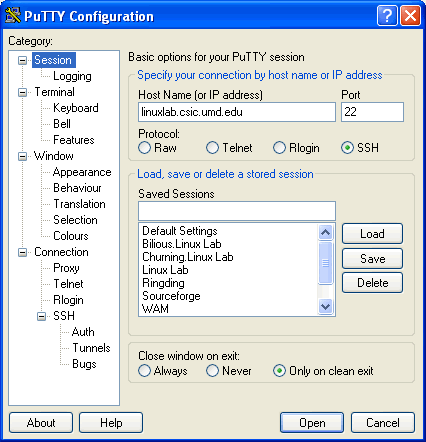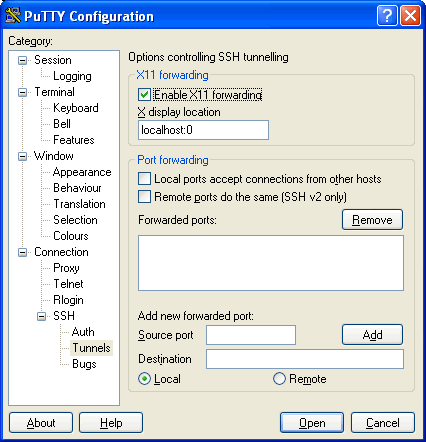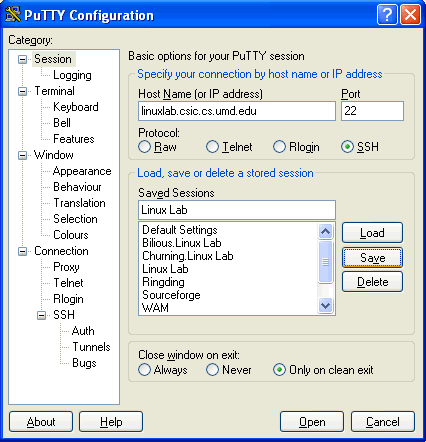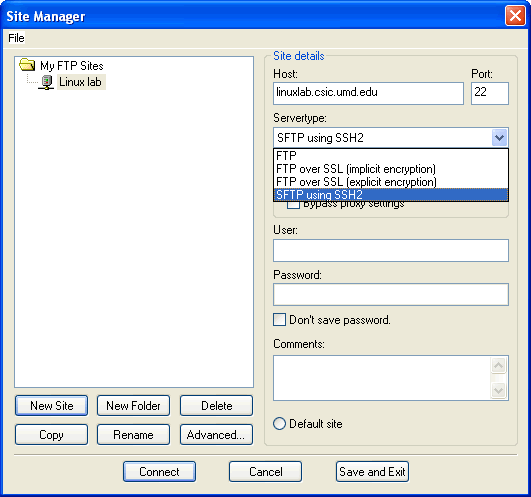


Connecting to the Linux Lab Remotely
By Kevin Conroy
Introduction
Many students complain that the Linux Lab hours are not
convenient
or that they would prefer to program from the comfort of their dorms/homes rather than going to the lab which can be crowded and noisy. The Linux Lab supports remote access but their documentation isn't very user friend for newbies.
What follows is a tutorial on how to set up a Windows machine to remotely connect to the Linux lab. If you have a Linux or Mac box then you are probably already familiar with XWindows/XTerm and probably don't need any help from me for connecting to the lab remotely. However, I do have one trick that may help if you are lost:
Linux/Mac Instructions: At the x-term prompt, type "ssh -X -l <user name> linuxlab.csic.umd.edu". Enter your password when prompted.
As with any tutorial, if there is incorrect information or information that you feel should be added, please share!
Install Required Software
You will need several pieces of software (free unless otherwise noted):
| Type of Program | Possible Solutions |
| SSH Client | PuTTY (get the "Windows-style installer") |
| FTP Client w/ SSH Support | FileZilla |
| X-Server | Cygwin/X WinaXe ($$) Reflection ($$) |
| VPN (for off-campus users only) | UMD VPN Dialer |
NOTES: When installing Cygwin/X, be sure that you download and install XFree86. This should be included by default but if you decide to tweak your installation make sure that you install the 'XFree86-base' package from the 'XFree86' category.
Configuring PuTTY
The first time you use PuTTY you will need to configure it for the Linux Lab.



Connecting Remotely
Using PuTTY for Code Development
File Transfers
It is often necessary to transfer files between your home machine and your Linux Lab account. When this need arises, be sure to use an SSH enabled FTP client such as FileZilla. The settings for FileZilla are:
Host: linuxlab.csic.umd.edu
Port: 22
Servertype: SFTP using SSH2
By Kevin Conroy
Last Updated:
September 15, 2004
The information in this guide is provided "as-is" with no warranties and confers no rights. Author not responsible for human stupidity or the inability to use CVS to prevent code loss.